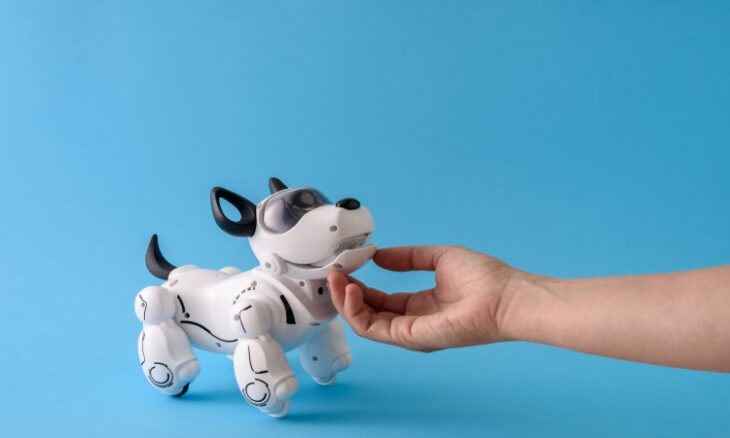AR system brings new life to robot pets
Researchers from several Scottish universities have created an advanced software system designed to revitalise ageing robot pets and toys through the use of augmented reality. Their prototype demonstrates how virtual overlays can provide these devices with new behaviours and expressions, greatly enhancing their level of interactivity.
The system, named Augmenting Zoomorphic Robotics with Affect (AZRA), seeks to address the limitations of current robot pets, which often have only a narrow range of responses. By introducing complex behaviours and emotional simulations, AZRA has the potential to transform both robot companions and non-interactive toys, such as plush dolls, into more engaging experiences that resemble interactions with real animals.
This development could offer valuable companionship for individuals unable to keep live pets due to health restrictions, rental property rules or financial barriers. When combined with augmented reality headsets such as Meta’s Quest, AZRA projects vivid facial expressions, light effects, sound cues and thought bubbles onto the toy’s surface and environment. These enhancements allow the robots to appear more lifelike, capable of expressing moods influenced by their surroundings or interactions with their owner.
AZRA integrates features such as eye contact detection, spatial awareness and touch response. The technology enables robot pets to react to strokes, indicate when they are touched in an unwanted way, or even demand attention when ignored. Conversely, they can also demonstrate calmness when owners are otherwise occupied. Over time, the system adapts to household dynamics, adjusting the robot’s behaviour to align with the personality and lifestyle of its owner. Playful households may see their robot become more energetic, while quieter homes may find it displaying more relaxed tendencies.
Beyond companionship, the project also presents an environmental benefit by potentially reducing electronic waste. By breathing new life into outdated robot pets and toys, owners may be less inclined to discard them, extending their usefulness and delaying their journey to the landfill.
The research team will present the details of AZRA at the 34th IEEE International Conference on Robot and Human Interactive Communication (RO-MAN 2025), scheduled to take place in the Netherlands on 26 August.
The project is led by Dr Shaun Macdonald of the University of Glasgow’s School of Computing Science. His inspiration stemmed from receiving a robot pet that quickly lost its appeal due to its limited functionality. Realising that zoomorphic robots had changed little in decades, he developed the idea of layering augmented reality interactions on existing toys to enhance their complexity and longevity.
During the early stages of development, Dr Macdonald used a commercially available zoomorphic robot, the Petit Qoobo, as a testing platform. Drawing on studies of canine emotional needs, he created the Zoomorphic Robot Affect and Agency Mind Architecture (ZAMA). This framework allows AZRA to simulate emotional states that shift over time, providing robots with temperaments influenced by multiple personality traits such as relaxation, irritability or gloominess.
Unlike simple cause-and-effect responses, AZRA endows robot pets with long-term personalities and daily mood fluctuations. These are shaped by the robot’s environment and owner interactions, resulting in more authentic companionship. Simulated desires for rest, food, affection and play are also incorporated, with needs that vary daily. When these desires are unmet, the robot seeks attention by displaying thought bubbles or emotive signals, giving owners a stronger sense of genuine interaction.
The research team is now exploring participatory studies where volunteers can engage with the technology and adjust the robot’s emotional responses in real time. These experiments aim to refine the system’s ability to balance natural behaviour with artificial simulation, creating interactions that feel both realistic and engaging.
With augmented reality glasses becoming increasingly mainstream, the researchers believe this technology offers a promising avenue for extending the lifespan of robotic devices. Rather than being replaced, existing toys and robot pets could be upgraded into companions with far more depth and personality, reshaping how humans connect with machines.










